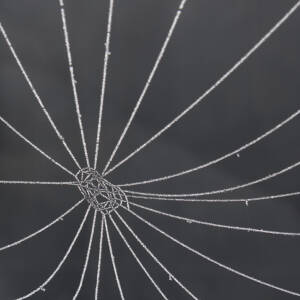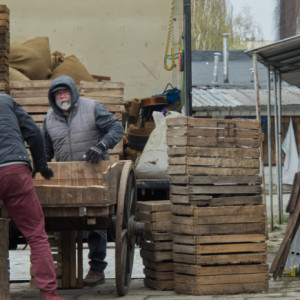Bazar Różyckiego
(For some reason Blip is blurring my pictures at the moment. If you go large you'll see them sharp. Very frustrating.)
I could have walked but I like to find out how public transport works in a new place, and anyway what looked like light rain from my bedroom window turned out to be delicate snow (I'm grateful to my Polish next-door neighbour in Oxford who warned me I’d probably need warm clothes here), so three stops on the metro it was to get to the Warsaw Uprising Museum.
Rarely have I tried so hard and failed so badly to understand an exhibition. Especially such a highly rated one. Loud regular drumbeats are drowned out from time to time by explosions, the indiscernible grey-on-black labels are at back-ache-bending height and the story is told as a relentless presentation of episodic facts in the present-historic with no coherent narrative. I hate the present historic. It doesn't make things more immediate for me, it destroys my sense of sequence. There is an argument for recreating the uncertainty and confusion of the uprising but I'm not persuaded that it's effective when I'm safely insulated from its participants' terror, rage, national pride and drive to survive. What it meant was that I simply couldn't make sense of the information.
I was determined to grasp this hugely important bit of history and went back to the entrance to collect a floor plan. No help. The numbers on the plan did not relate to the numbers in the exhibition. The floors were printed and labelled in an order that got me lost when I went back. I switched on data on my phone so I could read the Wikipedia article try to make sense of it all but there was too much noise for me to concentrate.
Sadly, I left.
To Praga, on the other side of the Vistula River. It was once a separate town from Warsaw, with a population almost 50% Jewish, and I visited a restored Jewish prayer room, in use until the Jews were forced in 1940 into the Warsaw ghetto, very close to where I'd started my day in Wola back on the other side of the river.
More recently Praga was a working-class suburb but it is being gentrified and has some achingly trendy small businesses (e.g. the tin-foil covered restaurant in my last extra). And even Google. But the best thing by far for me was stumbling across a bit of its past in Bazar Różyckiego, opened in 1882 - a market that at 1pm on a Saturday was packing up from selling wedding and confirmation dresses, shoes, flowers and phone chargers: main picture and a few extras. Fabulous place.
That should have been more than enough for one day but I realised I just had time to get to the National Museum to see its gallery on Polish design. A thoughtful commentary, relating approaches to design to ideas of nation and politics over the last 100 years.
km=7




Comments
Sign in or get an account to comment.


